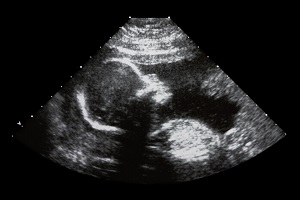A non-invasive prenatal test measures the risk of spontaneous abortion. The mechanism is the same behind prenatal diagnosis of Down syndrome and other diseases. Just a drop of blood to detect the chromosomal abnormalities of the fetus. This way you can understand what is the risk of complications, all before the 10th week of gestation.
Chromosomal abnormalities are present in 1 live-born baby on 1000. The most common ones are identifiable by special non-invasive prenatal tests that work with only one drop of blood. However, scientists are developing new tests to diagnose rare hereditary diseases and other abnormalities.
It is estimated that only 50% of the fetuses with rare chromosomal anomalies survive. Locating them in the early stages of gestation would measure the risk of spontaneous abortion. An Australian team then developed a prenatal test for this purpose. The researchers identified 90 rare chromosome abnormalities, of which 70% were associated with severe complications and abortion.
If the test is positive, doctors may advise you to proceed with more invasive tests. This would allow families to choose how to deal with the risk and to prepare for a possible loss of pregnancy.
Source: newscientist.com
Add a comment




